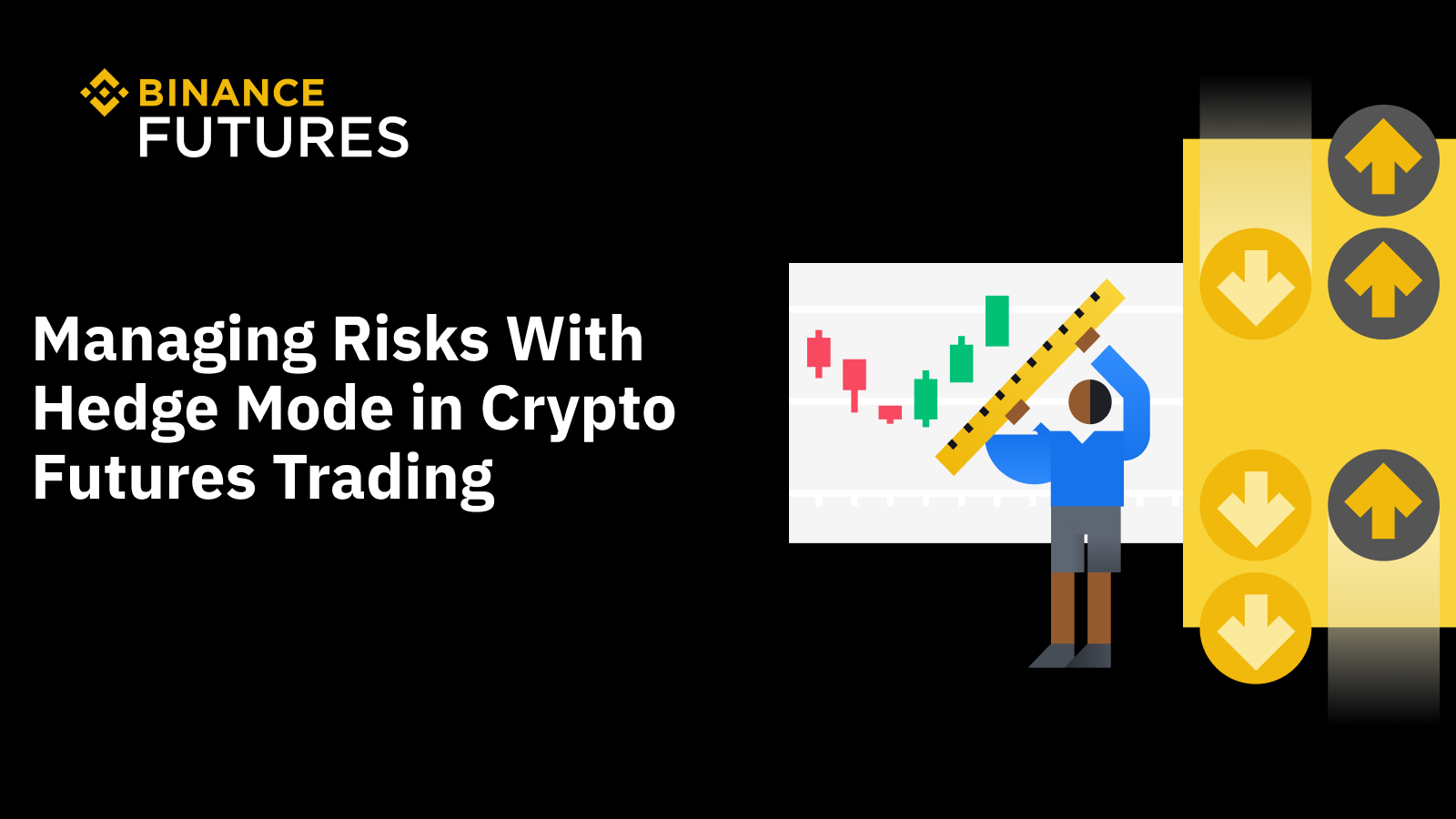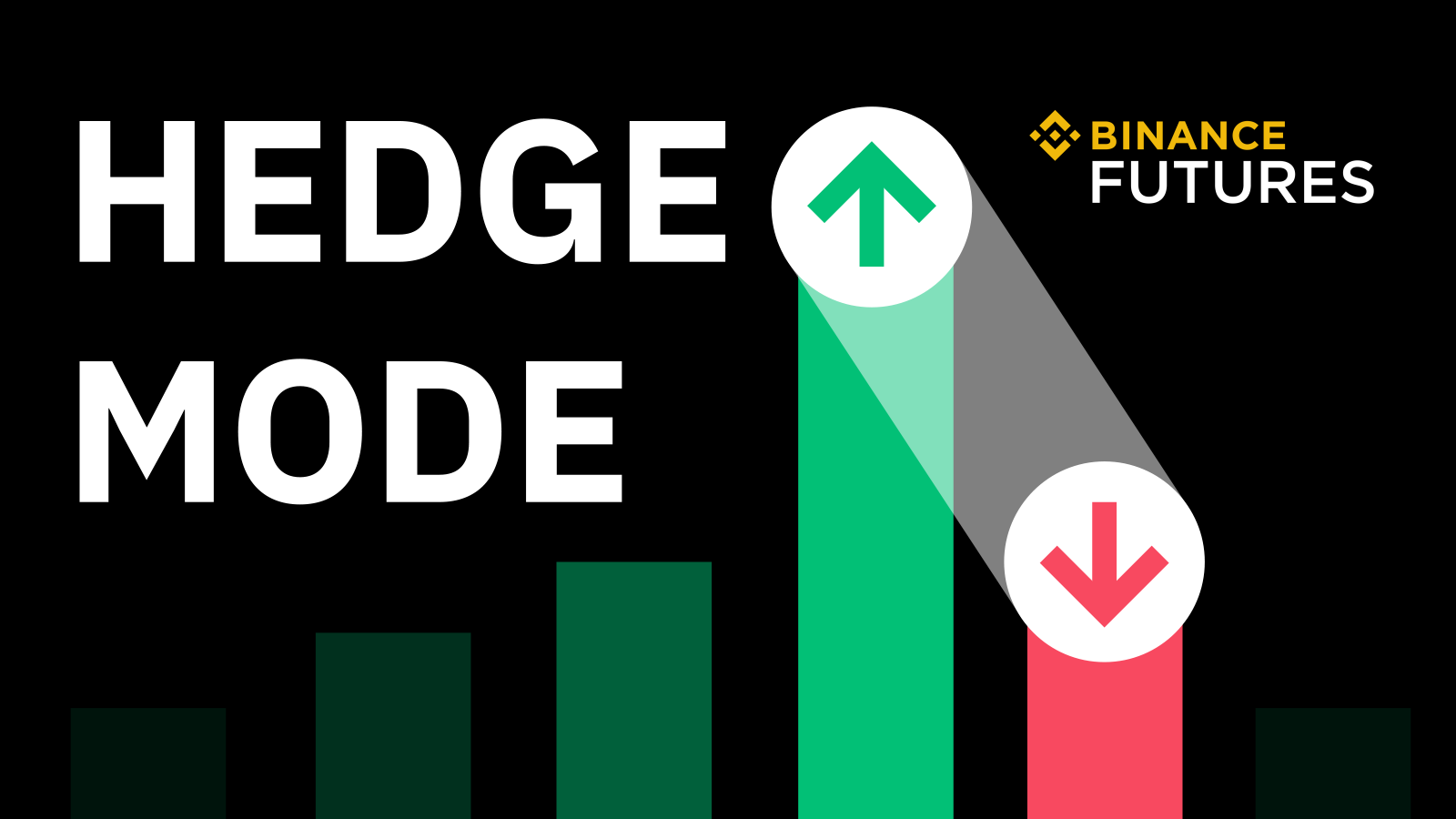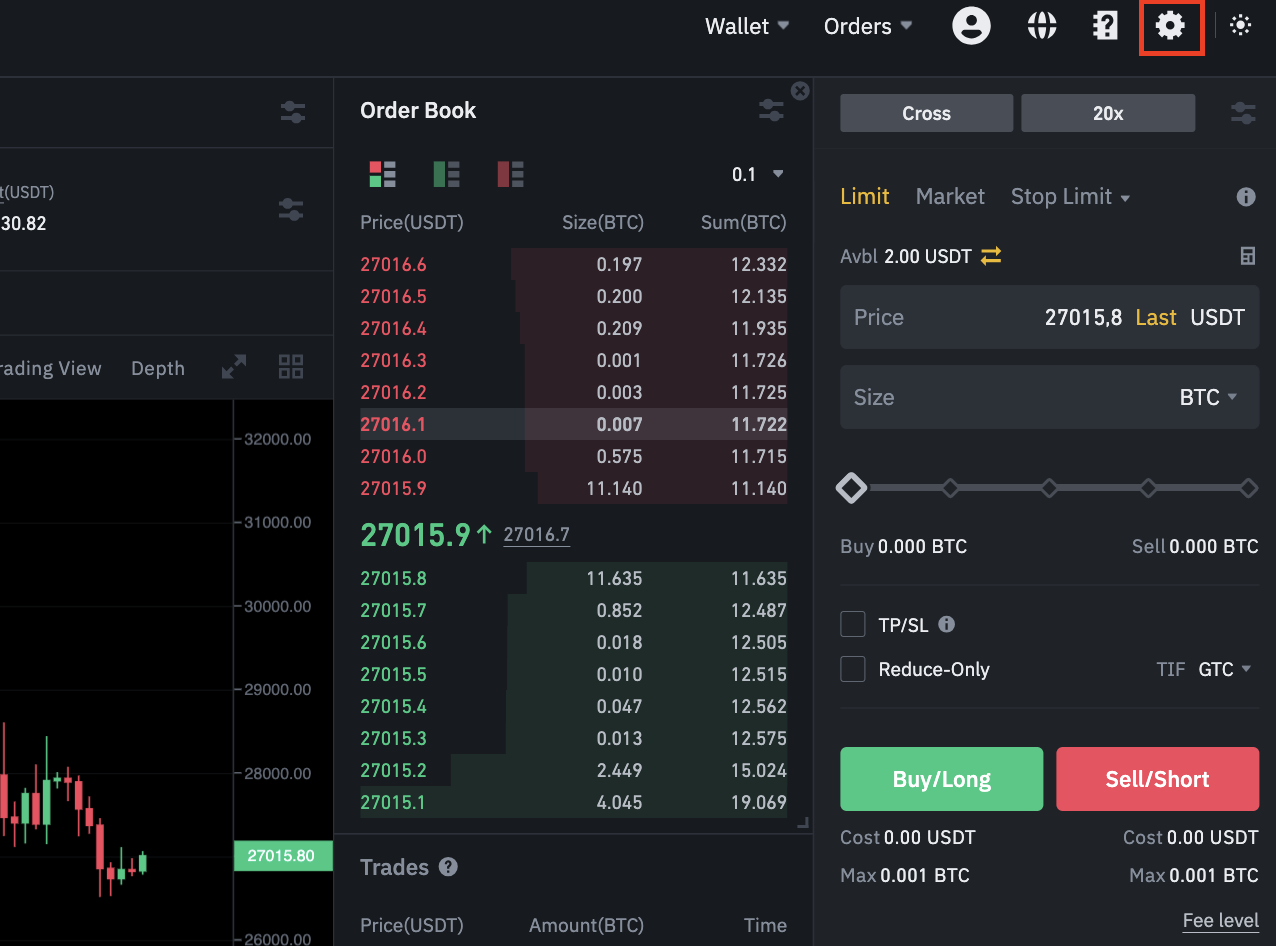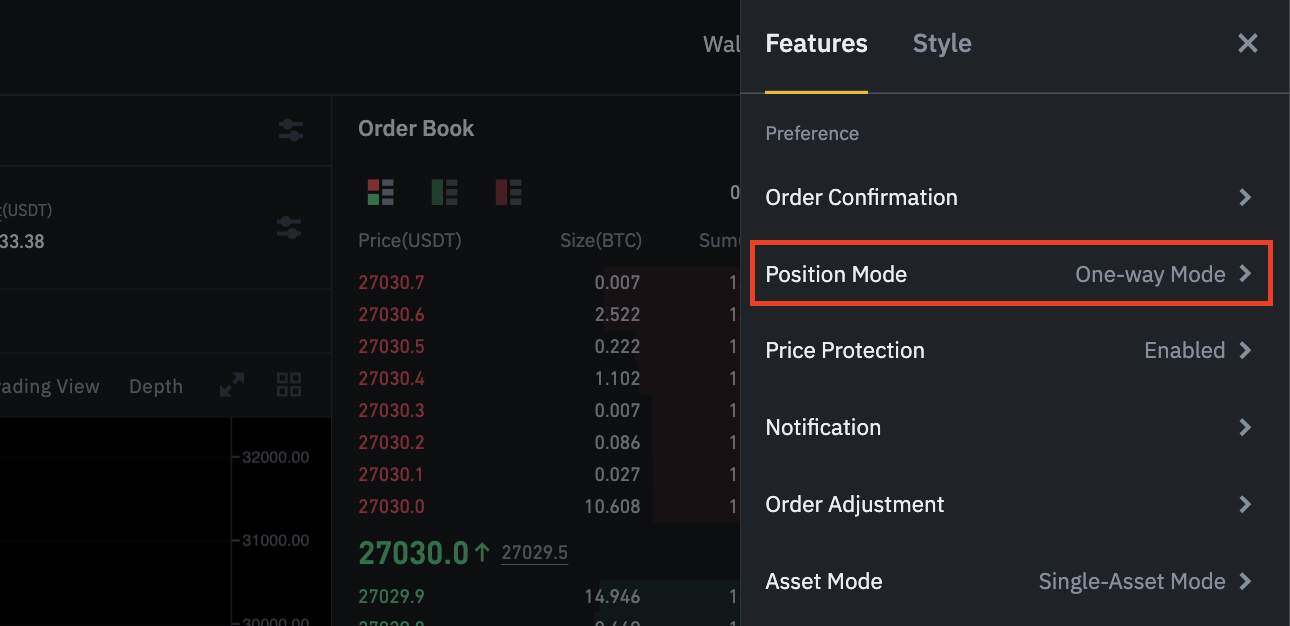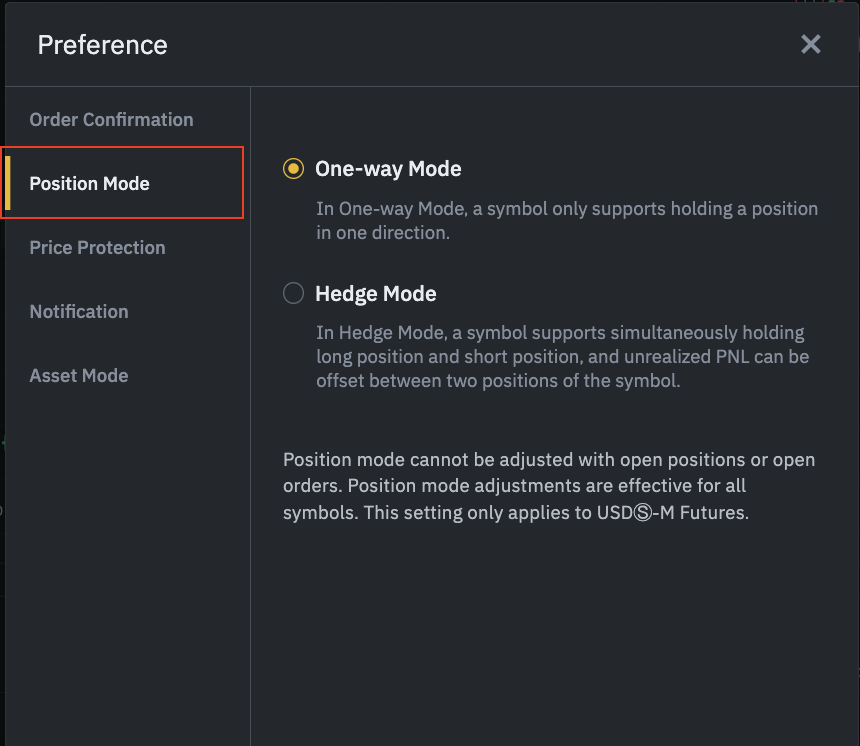Managing Risks With Hedge Mode in Crypto Futures Trading
Disclaimer: Digital asset prices can be volatile. Not financial advice. Do your own research. See full terms here and our risk warning here and below. Binance Futures products are restricted in certain countries and to certain users. This communication is not intended for users/countries to which restrictions apply.
Main Takeaways
Hedge mode is a trading strategy primarily used in futures trading to mitigate risk exposure.
It entails opening both long and short positions on the same contract simultaneously to profit from market fluctuations while reducing potential losses.
One-way mode permits a single-direction position, contrasting Hedge Mode's dual-direction approach.
Risk management and portfolio diversification are critical aspects of trading strategies, especially during extremely volatile market conditions. One approach that allows traders to take advantage of market movements, regardless of the direction, is hedging practices. Hedging typically enables investors to offset investment losses while maintaining their exposure to the market.
Cryptocurrency hedging is a risk management strategy to minimize losses by taking an offsetting position in a related cryptocurrency or derivative. It involves taking a primary position, identifying market risks, and then taking a counterposition – a position in a related cryptocurrency asset or derivative anticipated to move in the opposite direction of the primary position. But what if a trader could open two opposing positions on the same derivative? This is where Hedge Mode comes in.
This comprehensive article delves deep into the Hedge Mode concept in futures trading, its applications, and how it differs from the traditional one-way approach.
What Is the Difference between One-Way Mode and Hedge Mode?
One-way mode refers to a trading strategy involving opening a position in one direction only – long or short – under a single contract at a specific time. This is opposed to the Hedge Mode’s capacity to allow traders to open two opposite positions simultaneously.
For instance, a trader can open a long position anticipating that the underlying cryptocurrency’s price will go up in a short timeframe. The trader may also intend to open a short position, speculating that the price will depreciate in a longer timeframe. However, in one-way mode, opening two opposite directions under the same contract would either cancel each other out or significantly reduce their sizes.
Hedge Mode Trading Strategy
Hedge Mode is a trading strategy primarily used in futures trading to mitigate risk exposure to the market’s directional movement. It entails opening both long and short positions on the same contract simultaneously to profit from market fluctuations while reducing potential losses.
While the leverage used in futures contracts can amplify potential profits, it also exposes investors to amplified market risks. To mitigate this, Hedge Mode aids futures traders to strike a delicate balance between potential gains and risk reduction. The essence of the Hedge Mode is in the simultaneous execution of two opposing positions – long and short.
Hedge mode strategy acknowledges the unpredictability and volatile nature of cryptocurrencies. Its primary goal is risk mitigation, allowing investors to balance their exposure to the futures market. If one position suffers losses, gains in the opposite position help offset those losses, reducing overall risk exposure.
If a trader opens a long position, they have purchased a futures contract speculating that the underlying cryptocurrency’s price will appreciate. This would result in a profit when they eventually close their position. At the same time, the trader opens a short position on the same contract. The trader typically sells cryptocurrency assets they do not own, anticipating that its price will decline at a future date. In this scenario, the short position acts as a hedge against the long position and vice versa.
Example:
Suppose Jane is trading BTC/USDT pairs in the Binance Futures market, using the Hedge Mode preference. Assuming she opens a 10 BTC long position and at the same time opens a 5 BTC short position in the BTC/USDT pair. If the BTC/USDT price moves from 26,000 USDT to 30,000 USDT, the net profit of her long position and short position will be as follows:
Net Profit/Loss = (Long Position - Short Position) * Profit/Loss
(10 - 5) * (30,000 - 26, 000)
5 * 4,000 = 20,000 USDT
If the price moves declines instead, say from 26,000 to 21,000, the net profit would be:
(10 - 5) * (21,000 - 26, 000)
5 * (-5,000) = - 25,000 USDT
Note that the potential loss is significantly less compared to if she had only opened a long position and the trend had not gone her way. Eg. 10* (-5,000) = 50,000 USDT
General Use Cases for Hedge Mode
Hedge Mode strategy can be used for:
Position insurance: Hedge mode may provide a safety net for traders during periods of market uncertainty, such as the onset of bearish trends or significant market news. By holding both long and short positions at the same time, traders reduce their dependence on a ‘one-way’ price movement. This is especially useful when the market trend does not go their way, ensuring that they collect potential profits and offset their potential losses. Put it this way, Hedge Mode can be used to make potential profits on both the rise and fall of the underlying cryptocurrency’s price.
Event-based trading: This strategy may also be useful around major crypto events and news such as hard forks and regulatory announcements. Such events often influence price movements and employing Hedge Mode may aid traders mitigate the associated risks.
Trading volatile altcoins: Compared to blue chip cryptocurrencies, most altcoins often exhibit more significant price fluctuations. Futures traders may use Hedge Mode to take advantage of such rapid price movements while protecting their capital.
Detailed Position Analysis: In Hedge Mode, a trader can separately analyze the performance of their long and short positions for the same cryptocurrency pair. This granular level of detail aids in better understanding which aspects of their strategy are most effective and how different market conditions affect each side of their trade.
Accurate Performance Tracking: When a trader reverses a trade in One-Way Mode, there's a risk of losing track of individual trade performance, as positions are aggregated. Hedge Mode, by maintaining distinct records for long and short positions, allows traders to retain a clear view of their trading history, costs, and the profitability of each trade.
How can Using Hedge Mode be More Beneficial Than Closing and Reopening Positions in Volatile Markets?
The question of whether using Hedge Mode is more beneficial than closing and reopening positions in volatile markets arises from the need to understand the strategic value of maintaining simultaneous long and short positions, as opposed to simply exiting the market and re-entering later. This inquiry is particularly relevant in the context of Jane's trading scenario:
Jane has a 10 BTC long position and, foreseeing potential short-term volatility, decides to open a 5 BTC short position in Hedge Mode. If the market goes up, her net position (the difference between her long and short positions) gains from the rise, albeit at a reduced rate due to the short position. Conversely, if the market falls, her short position mitigates the losses from her long position. Essentially, Jane's net exposure to BTC's price movement is equivalent to being long 5 BTC due to the hedged short position.
However, the outcome seems similar to if Jane had simply reduced her long position from 10 BTC to 5 BTC, thus being less exposed to volatility.
This similarity in net exposure raises the question of why a trader would opt for Hedge Mode instead of adjusting their overall position size by reducing their open position, or closing and reopening trades:
Continuous Market Participation: With Hedge Mode, traders like Jane can stay in the market continuously, maintaining their long-term positions while using short-term hedges to navigate volatility. This continuous participation avoids the risks associated with trying to time the market for exits and entries, which can be particularly challenging during periods of high volatility.
Cost Efficiency: Hedge Mode can be more cost-efficient than closing and reopening positions. Each trade potentially incurs transaction fees, spread costs, and slippage, especially in volatile markets where prices can change rapidly. Hedging allows traders to adjust their net exposure without incurring these costs.
Strategic Flexibility: Hedging provides strategic flexibility, allowing traders to quickly adjust their market stance in response to changing information without closing their core positions. This rapid response can be critical in volatile markets where opportunities and risks can arise suddenly.
Tax Considerations: Depending on the jurisdiction, unrealized gains or losses from open positions may be treated differently for tax purposes compared to realized gains or losses from closed positions. Hedge Mode enables traders to potentially manage their tax liabilities more effectively.
Psychological Advantages: Traders may find it psychologically easier to hedge a position rather than close it. This is because hedging avoids the psychological impact of realising a loss and the subsequent pressure to "get back in" at the right time.
Leverage Management: In futures trading which involves leverage, using Hedge Mode allows traders to manage their leverage ratios more precisely, as they can maintain different levels of leverage on their long and short positions.
Switching Between Hedge Mode and One-Way Mode on Binance Futures
By default, the position mode is set to one-way mode. To open a position in Hedge Mode, the user has to change Position Mode in the Preference settings from one-way mode to Hedge Mode.
1. Open the trading interface and click [USDⓈ-M] or [COIN-M] on the top navigation bar.2. Click the settings icon at the top right and select [Preference] - [Position Mode].
3. Select [One-Way Mode] or [Hedge Mode].
Please note that Position Mode cannot be adjusted while you have open positions or open orders.
Closing Thoughts
In the rapidly evolving world of cryptocurrency trading often characterised by high volatility, Hedge Mode emerges as a strategic tool for traders seeking to balance risk and reward. By enabling the simultaneous holding of both long and short positions on the same contract, Hedge Mode offers a nuanced approach to risk management, allowing traders to safeguard against market downturns while remaining positioned to capitalise on upward trends.
Hedge Mode's relevance is especially pronounced in scenarios of market uncertainty, where sudden price swings can erode potential profits or amplify potential losses. By offering a buffer against these abrupt movements, Hedge Mode helps in maintaining a more stable trading environment, where the focus shifts from short-term fluctuations to more strategic, long-term trading goals.
Further Reading
Risk Warning:
No Representation
This content is presented to you on an "as is" basis for general information and educational purposes only, without representation or warranty of any kind. It is not intended or should not be construed as financial or investment advice, nor is it to recommend or intend to recommend the purchase or sale of any specific product(s) or service(s).
Hypothetical Performance Results
Digital asset prices can be volatile. The value of your investment may go down or up, and you may not get back the amount invested. Any results posted herein are intended as examples only to provide you with a reference of what potentially could have made or lost trading with the technical indicators and tools, but are in no way a reflection of what you could have made or lost in the same situation. Therefore, you should not rely on the results as a representation of what your returns or losses would have been utilizing such technical indicators. There are numerous other factors related to the market in general or to the implementation of any specific trading program which cannot be fully accounted for in the preparation of hypothetical performance results and all of which can adversely affect actual trading results. Past performance should not be taken as an indication or guarantee of future performance, and no representation or warranty, expressed or implied is made regarding future performance.
Responsibilities
You are solely responsible for your investment decisions, and Binance is not liable for any losses or damages you may incur. The risk warning described herein is not exhaustive, therefore you should carefully consider your investment experience, financial situation, investment objective, risk tolerance level and consult your independent financial adviser as to the suitability of your situation prior making any investment. For more information, see our Terms of Use and Risk Warning.
The products and services referred to herein may be restricted in certain jurisdictions or regions or to certain users in accordance with applicable legal and regulatory requirements. You are solely responsible for informing yourself about and observing any restrictions and/or requirements imposed with respect to the access to and use of any products and services offered by or available through Binance in each country or region from which they are accessed by you or on your behalf. Binance reserves the right to change, modify or impose additional restrictions with respect to the access to and use of any products and/or services offered from time to time in its sole discretion at any time without notification.
